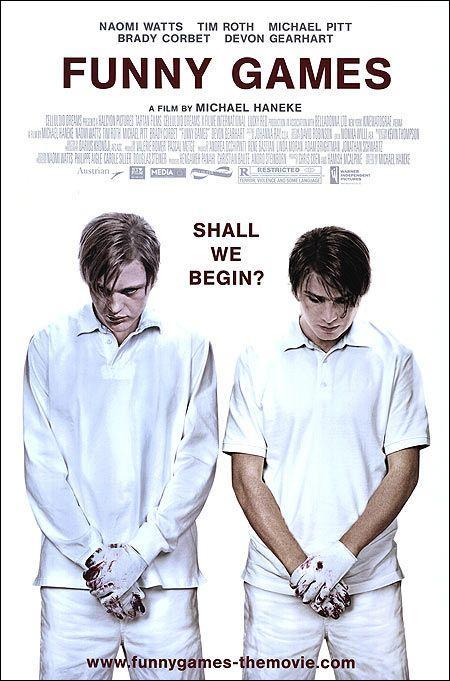Binary Opposition: A binary system based on having two 'opposites'.
Deconstruction: Breaking concepts and idea's down into their parts/structures to understand them and to create new idea's from the pieces.
Reinscribe: Renaming or redefining in a new context.
Cognitive Dissonance: Discomfort caused by having conflicting ideas or beliefs.
Judith Butler is an American philosopher and theorist that focuses on gender and the effect of sex on gender. She explores the idea of gender being preformative and something that people perform on a place to place basis as opposed to being something that just is.

5 Reasons Funny Games is postmodern:
1. Deconstruction: The film deconstructs the horror tropes found in horror movies by not showing any of the violence on screen, this leaves the viewer without the experience the expect as the horror is all off-screen.
2. The fourth wall: The film breaks the fourth wall during the film as a character addresses the audience with winks and questions.
3. Non-linear/Fragmented: The film has elements of these, the most noticeable being the scene in which one character, Peter, gets shot only for Paul to rewind the scene and prevent it. This is non-linear and fragmented as it shows the character changing the way the film plays out and the order things would happen in. The scene also shows deconstruction as it deconstructs the idea of the characters being set on an unchanging course as Paul just rewinds and changes the story.
4. Appropriation: The film is a shot-for-shot remake of itself as the director originally made the film in German and then remade the film for America.
5. Stereotypes: The film plays with stereotypes as the antagonists are dressed differently to how stereotypical antagonists are portrayed. Instead of wearing dark colours the antagonists are shown wearing white and are surrounded by bright colours more than by darker ones.



